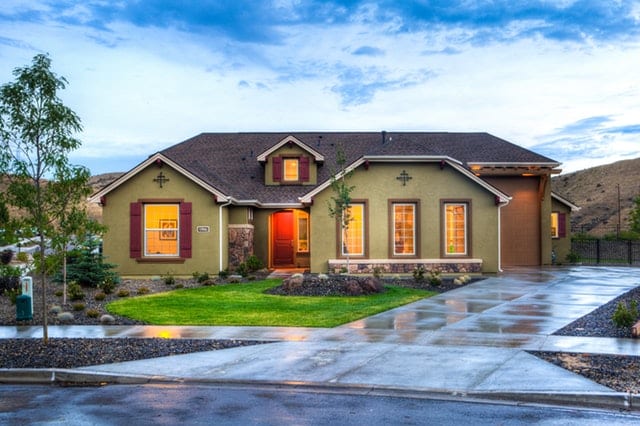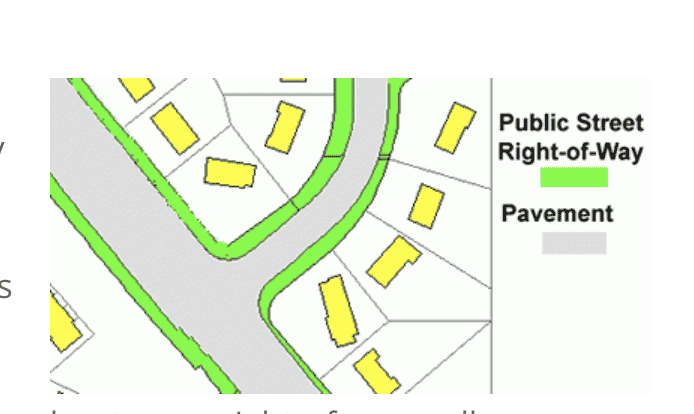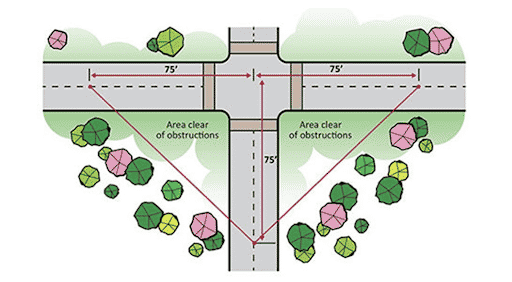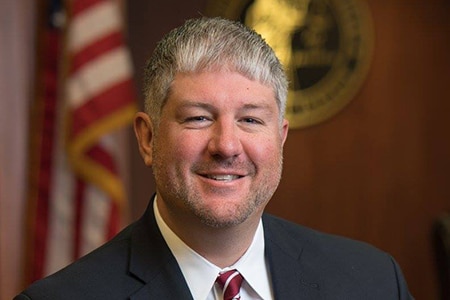Our law firm represents multiple cities in Northern Kentucky. We frequently counsel and advise on unique areas of municipal law that affects all property owners. There are many gray areas and unique laws related to zoning and property rights. Each case has a unique twist, but there are some common themes that we see time and time again.

What is the Public Right-of-way?
The Public Right-of-way (ROW) is the strip of land dedicated to public infrastructures such as streets, sidewalks, and utilities. This area generally extends from the edge of the road to the sidewalk or utility poles.

How to determine where the ROW starts on your property
In order to properly determine where the public ROW starts on your property, you will have to hire a property surveyor to locate exactly where your private property transitions into the ROW. The picture below shows a general example of where property lines exist and what is typically considered the ROW.
Who maintains the Right-of-way?
While the ROW land is dedicated for use by the city or utility company, the maintenance responsibilities for the ROW lie on the individual property owner. Therefore, you are responsible for cutting the grass, and maintaining the sidewalk clear of branches, leaves, foliage, dirt, debris, snow, and ice. Additionally, some cities require that the property owner is responsible for repairing sidewalks on their property. You will want to contact your local government or check your cities ordinances to see if you are responsible for repairing. A property owner, however, is not responsible for repairing the actual roadway driving surface.
What is the difference between an easement and a Right-of-way?
Easements are a right granted to a person or entity to use the land or property of another. Easements can be either permanent or temporary. One of the most common examples of an easement is when property owners grant easements for the placement of utility poles, water pipes or electricity lines. A Right-of-way is the actual land area acquired for a specific purpose. If a property has an easement running across it, the rights to use the property are extended to the party it was issued to, but still owned by the original property owner.
Can I plant vegetation in the Right-of-way?
The answer to this question varies greatly from city to city. To find the exact answer to this question you will have to check the ordinances in your city. Generally, however, you are forbidden from allowing the growth of any tree, shrub or bush, within the Right-of-way, grow into the street in any manner that is hazardous to the public use of that Right-of-way. Therefore, you cannot obstruct a driver’s vision, interfere with the use of the sidewalk, cause the sidewalk to crack from roots, or interfere with any public utilities in the Right-of-way. It is your responsibility to keep the Right-of-way clear from hazards and ensure that anything growing in this area does not block the view of a driver or a pedestrian’s use of the area. Furthermore, while cities generally permit planting here, some require a permit. You will want to contact your local government to see if a permit is required before planting vegetation in this area.
What is a Site Distance Triangle?
A Site Distance Triangle (SDT) is a corner of any intersection that is needed to be kept free of visual obstacles to allow drivers to see oncoming traffic. The SDT represents the area where all trees, bushes, and vegetation located on private property which overhangs a street or sidewalk is to be kept trimmed to avoid obstructing the view of travelers, in a vehicle or pedestrians. Again, you will need to consult your city ordinances or contact your local government for any specific restrictions regarding vegetation limits in this area. An example of the SDT area is shown below.

Can public utilities in the Right-of-way impact my rights to plant vegetation?
Utility companies have rights to the public ROW and often have priority to space, along with the city. For cities that require a permit, the reason is typically to ensure your plants will not affect above or underground utilities. Your selection of plants can be impacted based on what types of utilities may be underground. For example, gas, electric, and fiber optic lines are typically shallow and can get intertwined with roots much easier than a storm or sanitary sewer which tends to be much deeper. If you do wish to plant vegetation in the Right-of-way your safest bet is to call your local government and see if any restrictions are in place. If not, be sure to keep in mind that you are still responsible for keeping the Right-of-way free of debris and the area safe for motorists.
Jack Gatlin – Business Litigation Attorney
Our team has decades of experience educating and representing individuals, municipality, and business owners in the areas of right-of-way law.












